Misses Marked 2018’s Oakland Christmas Bird Count
by Dave Quady and Bob Lewis
During the week preceding count day, forecasts of rain and high winds created a sense of
foreboding that continued into the early hours of Sunday, December 16, as early-rising
birders set out to seek owls. Along Telegraph Avenue few vehicles broke the silence and
ambient light bouncing off low clouds obviated the need for flashlights. Playing a bit of
tape elicited a single call from a distant Barn Owl. Moments later Berkeley’s City Bird
silently flew in and circled overhead, and so at 3:30 a.m. Oakland’s 78th annual Christmas
Bird Count got underway.
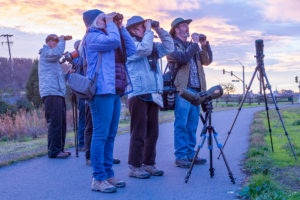 Sunrise photo of Bay Trail count by Katherine Briccetti
Sunrise photo of Bay Trail count by Katherine Briccetti
Thick cloud cover made dawn a non-event, but it nonetheless marked the usual ramp-up
of birding activity as teams met up in the field and began to bird their assigned areas.
Although winds gusted to 18 mph, the weather was mild during the morning:
temperatures in the 50 – 60 degree range, moderate winds and no rain. Our two boats
were able to get onto San Francisco Bay, 261 field observers provided good coverage
over the complete count circle and 34 yard watchers contributed mightily– producing, for
example, more than half of our record high 22 White-throated Sparrows. Rainfall began
about 2:15 pm, but by that time many teams had done their job, and by 3:00 p.m. most
folks had called it quits.
Our “good birds” of the day were a varied lot. They included single Long-tailed Ducks
from two different areas, a juvenile Ferruginous Hawk detected in two adjacent areas
(and chosen as the count’s Best Bird), 18 Snowy Plovers, 35 Surfbirds, a House Wren, a
Blue-gray Gnatcatcher, two Black-throated Gray Warblers (one reported by a yard
watcher) and a Western Tanager. Besides White-throated Sparrow, record-high numbers
(since 1974) were recorded for Cackling Goose, Green-winged Teal, Semipalmated
Plover, Great Blue Heron, White-tailed Kite, American Crow (2,486 birds) and Common
Raven (453 birds).
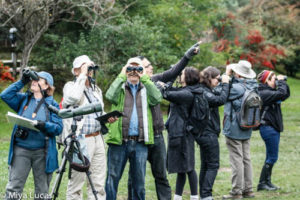 Photo by Miya Lucas
Photo by Miya Lucas
In recent years we’ve experienced a record-high count for one or the other of these two
corvids several times, so let’s examine their population trend. From 1974 through 1990
we averaged fewer than 200 total crows and ravens a year … over the following 10 years
we averaged more than 700 total crows and ravens annually, and since 2010 the annual
average has been nearly 1,800 birds. That has been quite a population increase, and
there’s no sign that it has topped out.…

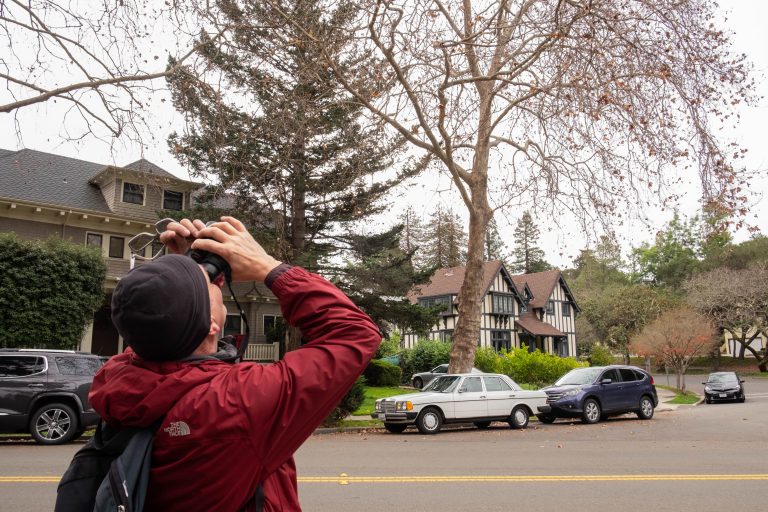
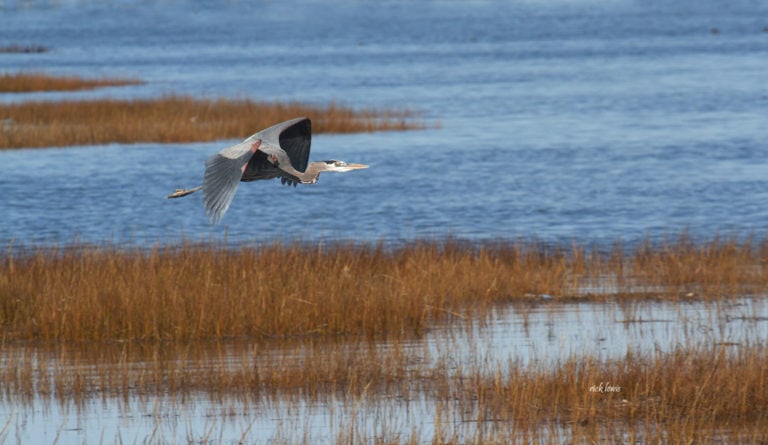
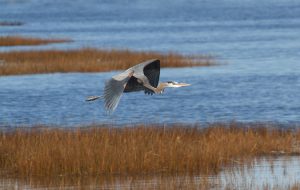 Arrowhead Marsh by Rick Lewis
Arrowhead Marsh by Rick Lewis
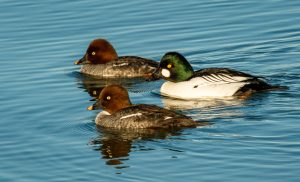 Common Goldeneye by Bob Gunderson
Common Goldeneye by Bob Gunderson
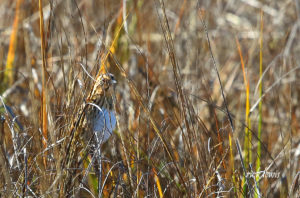 Nelson’s Sparrow photo at MLK Jr. Restoration Day by Rick Lewis
Nelson’s Sparrow photo at MLK Jr. Restoration Day by Rick Lewis
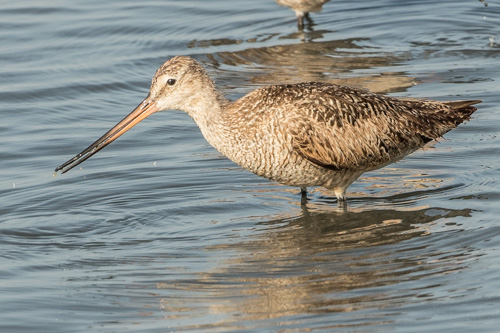
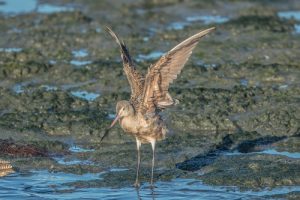 Marbled Godwit on the shoreline by Miya Lucas
Marbled Godwit on the shoreline by Miya Lucas
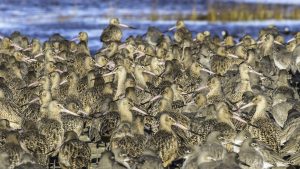 Flock of Marbled Godwits by Bob Gunderson
Flock of Marbled Godwits by Bob Gunderson
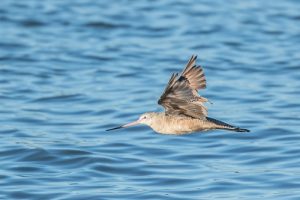 In flight by Miya Lucas
In flight by Miya Lucas
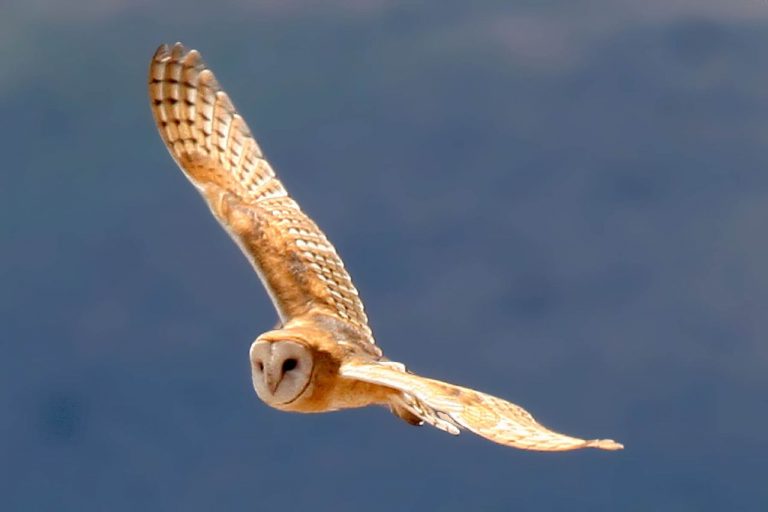
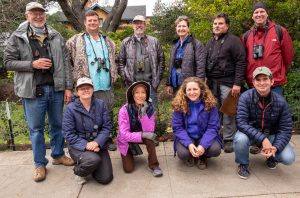 Claremont Canyon/Lake Temescal CBC group by Eleanor Briccetti
Claremont Canyon/Lake Temescal CBC group by Eleanor Briccetti
 Barn Owl by Bob Lewis (not taken at the CBC)
Barn Owl by Bob Lewis (not taken at the CBC)
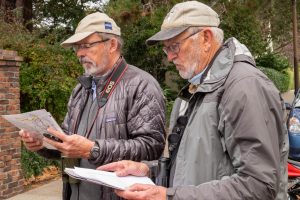 Bob and Dave by Eleanor Briccetti
Bob and Dave by Eleanor Briccetti
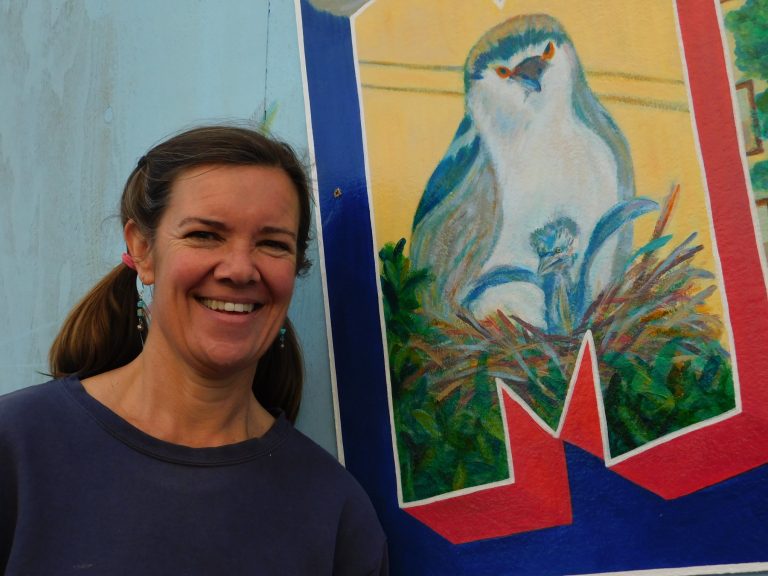
 Murals at Loard’s Ice Cream
Murals at Loard’s Ice Cream
 Mural at Club 2120
Mural at Club 2120
 Sketch of Postcard Front
Sketch of Postcard Front
 Lindsey Kernodle creating bird art at GGBA office by Cindy Margulis
Lindsey Kernodle creating bird art at GGBA office by Cindy Margulis
 One of Lindsey’s pieces.…
One of Lindsey’s pieces.…